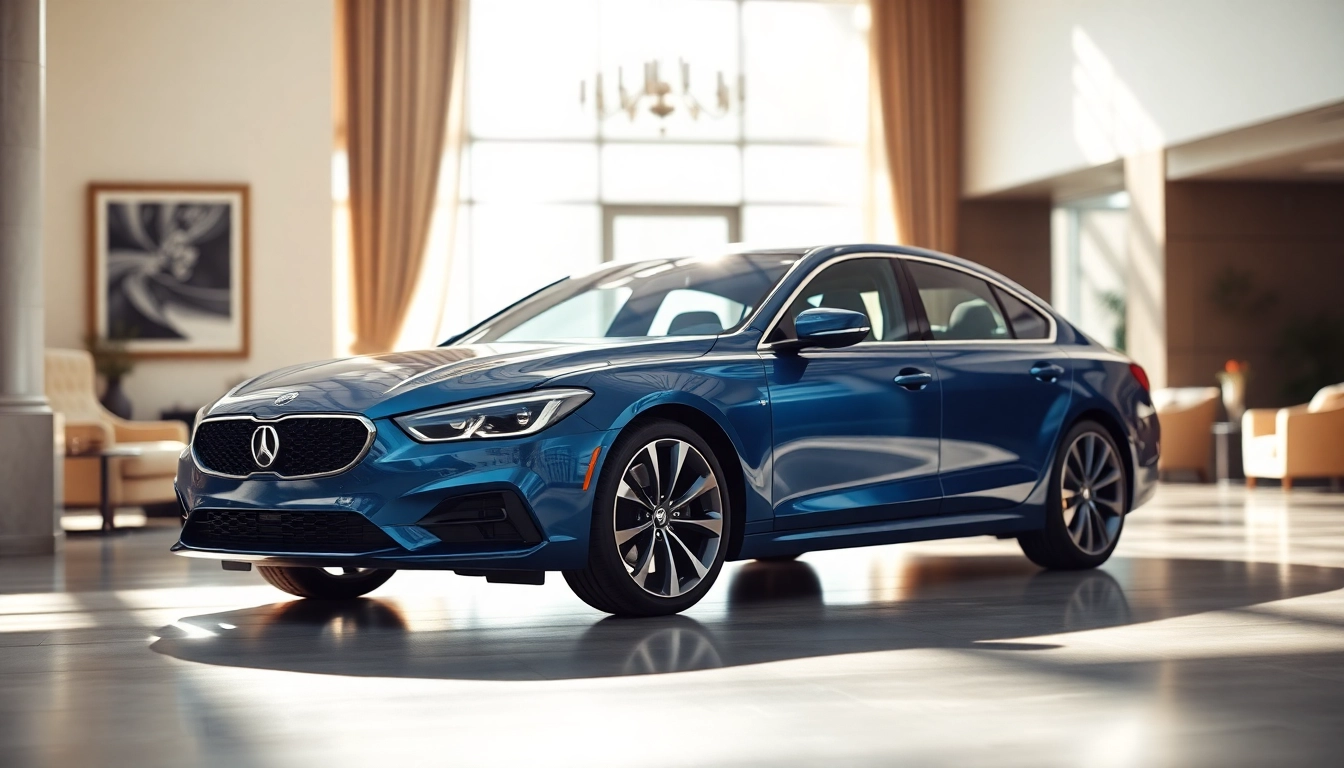Understanding What Makes a Perfect Car
When it comes to finding the perfect car, several factors come into play. The term “perfect” can vary significantly depending on individual needs, preferences, and lifestyles. This guide will explore the key attributes that define what a perfect car could mean for you, incorporating practical considerations, emotional drivers, and market insights.
The Key Features to Consider
Different cars come equipped with varying features that appeal to distinct segments of drivers. Here are essential features to evaluate:
- Performance: This includes engine size, horsepower, and drivetrain options. Whether you prefer an SUV for rugged terrains or a sporty sedan for speed, performance should align with your driving style.
- Fuel Efficiency: In today’s economy, how far a car can go on a gallon of gas is crucial. Electric and hybrid vehicles are gaining popularity for their efficiency and environmental sustainability.
- Safety Ratings: Top-tier safety features can be the difference between life and death. Look for vehicles with high crash-test ratings, advanced airbag systems, and safety technologies like automatic emergency braking.
- Interior Comfort: The interior should not only accommodate passengers comfortably but also offer advanced features such as infotainment systems, climate control, and ergonomic seating.
- Technology: Modern cars come with numerous technological advancements. Features such as Apple CarPlay, Android Auto, and advanced driver-assistance systems enhance convenience and safety.
How Personal Preferences Shape Your Choice
Many subjective factors determine the perfect car for an individual. Preferences such as design aesthetics, brand loyalty, and feature importance can heavily influence your decision:
- Design and Style: Depending on your personality, you might gravitate towards sleek designs, rugged off-road looks, or classic styles.
- Brand Loyalty: Many consumers prefer certain manufacturer brands because of previous positive experiences or brand reputation.
- Intended Use: Evaluate what you will primarily use the car for—daily commuting, long distance travel, or leisure activities, and select accordingly.
Comparing Different Types of Vehicles
The vehicle type significantly impacts your choice. The three main categories include:
- Passenger Cars: Sedans and hatchbacks are suitable for city driving, offering good fuel economy and comfort.
- SUVs and Crossovers: These vehicles offer higher cargo space and off-road capabilities while often providing enhanced safety features.
- Trucks: Ideal for those needing towing capabilities or significant cargo space, trucks can also serve well in off-road conditions.
Budgeting for Your Perfect Car
Once you understand the features you desire, the next step is establishing a budget that accommodates your choice of the perfect car
.
Setting a Realistic Price Range
Begin by assessing the total budget for purchasing a car, considering not just the sticker price but also ancillary costs:
- Down Payment: Ideally, aim for 20% of the purchase price as a down payment to reduce monthly payments.
- Monthly Payment Ability: Analyze your current financial situation and determine what payment amount fits comfortably within your budget.
- Resale Value: Consider vehicles known for retaining their value best to ensure you receive a fair return when selling or trading in in the future.
Understanding the Total Cost of Ownership
The total cost of ownership includes more than just purchase costs. Key components include:
- Insurance Premiums: Rates can vary based on the car’s make and model, driver history, and location.
- Maintenance Costs: Regular service, tire replacements, and wear-and-tear expenses can add up.
- Fuel Expenses: Estimate expected annual miles driven and the vehicle’s fuel efficiency to gauge fuel costs over time.
Financing Options and Best Practices
Explore various financing options, such as:
- Loans from Banks/Credit Unions: Often, these institutions offer competitive interest rates, and the application process can be straightforward.
- Dealer Financing: Dealers may provide attractive financing offers, especially promotions featuring low or zero-interest rates.
- Leasing: This allows you to drive a new vehicle every few years without long-term commitment, but comes with mileage restrictions.
Researching Options for Your Perfect Car
Once your budget is set, the next step involves extensive research to identify vehicles that meet your criteria.
Using Online Tools to Narrow Your Search
Utilize comprehensive automotive websites and applications to meet your research needs:
- Car Review Sites: Websites like Kelley Blue Book and Edmunds offer user reviews, professional insights, and vehicle rankings.
- Comparison Tools: Many platforms enable side-by-side comparisons of vehicle specifications to identify pros and cons easily.
- Vehicle History Reports: For used cars, services like Carfax can provide insights on ownership history, accident reports, and service records.
Visiting Dealerships and Private Sellers
After narrowing down your options, it’s vital to visit dealerships or contact private sellers to get hands-on experiences. Keep these tips in mind:
- Research Before Visiting: Know the market value of the cars you want to see, as well as current promotions and incentives.
- Take Notes: Document critical specs, offers, and your impressions during visits to help with comparison later.
Evaluating Vehicle History and Condition
For used cars, evaluating the vehicle’s condition is crucial. Consider inspecting the following:
- Exterior and Interior: Check for any signs of wear, paint mismatches, or detailing issues that may indicate previous accidents.
- Mechanical Inspection: A trusted mechanic should conduct a thorough inspection to detect potential issues not visible to the average buyer.
- Test Drive: This is one of the most crucial steps; feel how the vehicle handles, brakes, accelerates, and drives on different terrains.
Test Driving Your Perfect Car
A comprehensive test drive is essential in deciding whether a vehicle is indeed the right choice for you.
What to Look For During a Test Drive
Ensure you assess both subjective and objective aspects of the car during your test drive:
- Engine Performance: Ensure the vehicle accelerates smoothly and responds effectively to throttle input.
- Braking Tests: Evaluate how well the brakes respond—are they too soft or overly harsh?
- Seating Comfort: Evaluate seat support, adjustability, and overall comfort during different driving conditions.
- Visibility: Check blind spots and how well you can see the dashboard and surrounding traffic.
Assessing Comfort and Performance
During your test drive, be mindful of the small aspects that contribute to overall comfort:
- Noise Insulation: Is the cabin quiet, or do you find road noise distracting?
- Suspension Feel: Consider whether you feel bumps in the road too harshly or if the ride remains smooth.
Questions to Ask the Seller
Prepare a list of questions to ensure you gather all necessary information:
- Service History: Ask for records detailing any maintenance conducted, including major repairs.
- Ownership History: Understanding how many previous owners can provide insights about potential issues.
- Warranty Details: Clarifying the terms of any existing warranty can offer peace of mind for future maintenance.
Finalizing the Purchase of Your Perfect Car
Once you’ve found the perfect car, the next step is finalizing the transaction correctly.
Negotiating the Best Price
Negotiation can be an intimidating process but can result in significant savings:
- Initial Offer: Start with a realistic offer based on market value and similar vehicles.
- Willingness to Walk Away: Don’t hesitate to walk away if the terms aren’t satisfactory; many dealers will improve their offers to keep your business.
Understanding the Paperwork Process
Ensure you thoroughly understand the paperwork involved in the purchase:
- Title Transfer: Confirm that the vehicle title is properly transferred to your name.
- Registration Process: Ensure that the vehicle will be registered correctly according to your local regulations.
- Loan Documentation: If financing, ensure that you understand all terms before signing loan agreements.
After-Purchase Considerations and Maintenance
Post-purchase, consider several aspects to maximize the value of your investment:
- Scheduled Maintenance: Follow the maintenance schedule outlined in the owner’s manual to keep your vehicle in optimal condition.
- Insurance Review: Periodically assess your insurance coverage to ensure you’re adequately protected.
- Adding Accessories: Consider any immediate modifications or accessories that can improve your vehicle’s functionality or appeal.
The journey to finding your perfect car can be exciting and rewarding. By carefully weighing your options and considering the various factors outlined in this guide, you will be well-prepared to make an informed decision that meets your needs and preferences, leading to many enjoyable miles on the road.



